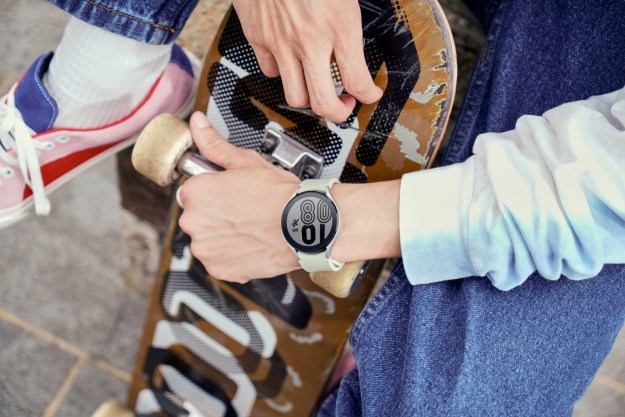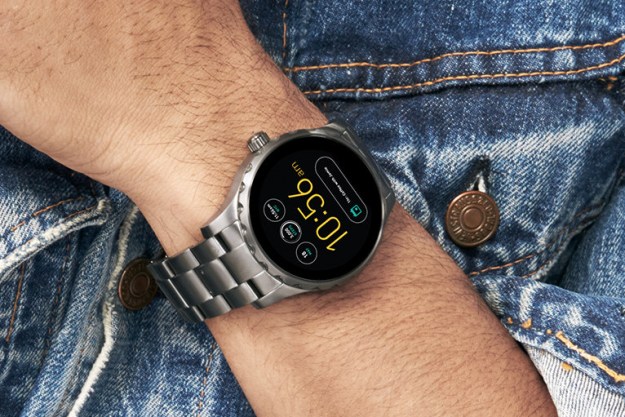
It caught me a bit off-guard. After all, isn’t fueling a competitor’s ecosystem counterproductive?
Early last year, FitBit made its app compatible with the iPhone, without the need for a separate band.
Not exactly. Wearables are still finding their groove with consumers, but some level of consolidation seems like a fairly reasonable bet in the months ahead. With the biggest names in consumer electronics currently battling it out in earnest, the harsh realities of capitalism mean that some of the current crop might not make it in the long run. Misfit was hedging its bets, and it’s not the only one.
Early last year, FitBit made its app compatible with the iPhone, without the need for a separate band. Granted, the setup didn’t offer quite as many features as actually wearing a FitBit device, but it was hard not to view the move as sign of things to come.
Later in the year, JawBone, which had its own successful UP line of fitness bands, announced compatibility with Android Wear. Fitness trackers aren’t direct competitors with smartwatches in terms of pricing, but the space they occupy appears to be steadily shrinking as more advanced wearables perform many of the same functions.
It’s not just a band, it’s an ecosystem
If modular wearables are the future, as I suggested last week, we can foresee a time when big, bulky wearables have gone the way of the dodo in favor of discreet, embedded sensors. Should that future come to fruition, the smartphone will likely continue to be the key piece to the puzzle. A variety of sensors collecting various bits of data across our bodies still require a device to serve as a mainframe. Misfit is once again taking things a step further by integrating aspects of home automation into its offering.

This is good news for smartphone makers, of course — and could also prove a boon for the company that is able to lock users into their wearable software ecosystem right now. Companies like FitBit, Misfit and Jawbone almost certainly don’t want us thinking about their current hardware offerings as the gateway to a software-focused future. They’d much rather convince you to purchase an activity tracker now with the assumption that the category will stick around for good.
How will fitness companies make money with apps?
Once you’ve picked one up, if you’re satisfied with the software experience, perhaps you’ll be a customer for life — even as the definition of what you’re consuming continually changes. After committing to a user-interface and a proprietary fitness social network, it’s that much more difficult to change allegiances — especially if that move means losing all of the fitness data you’ve been tracking over the years.
There is some precedence for this. The e-reader market springs to mind. Look at companies like Kobo and Barnes & Noble with the Nook, which branched out from devoted e-readers to software applications. Like fitness apps, these sync information across devices and operating systems, eventually freeing users to take advantage of their offerings without the need for e-readers at all, as they used the Kobo or Nook app on their smartphone or tablet.
Shaking the money out of an app
It’s not a one-to-one comparison, and the contrast does present some interesting questions, chief among them is monetization. For e-reader manufacturers, the money was never in the e-reader as much as it was in books – they earned a cut every time someone bought one.
How will fitness companies make money with apps? There are a lot of possibilities. Advertising, in-app purchases and charging for the app all come to mind, but at the moment, none seem particularly plausible as a standalone revenue stream. The answer is, of course, data. Think about how much advertisers and research groups are willing to pay for user search and surfing analytics. Now imagine that kind of information in a real-world setting.
We’re talking about sensors tracking user movements, habits, location and all manner of different metrics feeding into a single app and database. It’s a sort of a holy grail for the companies out there currently looking to sell you things. The more you know about a consumer, the easier it is to make a sale — and this is about as close as we can come at the moment to cracking open a skull and reading what’s inside.
This isn’t an attempt at fear mongering — the information will no doubt be gathered anonymously and many companies will almost certainly offer an opt-in, based on past and present privacy fears about data collection. But collecting data will almost certainly play a role in the business model of wearable companies moving ahead.
Of course, all of that’s still a ways off. The fitness trackers still sell. But it’s easy to see how a confluence of factors could lead to a leveling off and the eventual erosion of the category, making room for future innovations in the space. And who can blame manufacturers for trying to get out in front of that curve?



